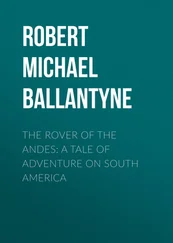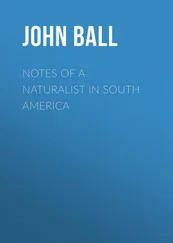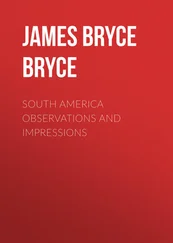Charles Waterton - Wanderings in South America
Здесь есть возможность читать онлайн «Charles Waterton - Wanderings in South America» — ознакомительный отрывок электронной книги совершенно бесплатно, а после прочтения отрывка купить полную версию. В некоторых случаях можно слушать аудио, скачать через торрент в формате fb2 и присутствует краткое содержание. Жанр: Путешествия и география, История, foreign_edu, foreign_antique, foreign_prose, на английском языке. Описание произведения, (предисловие) а так же отзывы посетителей доступны на портале библиотеки ЛибКат.
- Название:Wanderings in South America
- Автор:
- Жанр:
- Год:неизвестен
- ISBN:нет данных
- Рейтинг книги:5 / 5. Голосов: 1
-
Избранное:Добавить в избранное
- Отзывы:
-
Ваша оценка:
- 100
- 1
- 2
- 3
- 4
- 5
Wanderings in South America: краткое содержание, описание и аннотация
Предлагаем к чтению аннотацию, описание, краткое содержание или предисловие (зависит от того, что написал сам автор книги «Wanderings in South America»). Если вы не нашли необходимую информацию о книге — напишите в комментариях, мы постараемся отыскать её.
Wanderings in South America — читать онлайн ознакомительный отрывок
Ниже представлен текст книги, разбитый по страницам. Система сохранения места последней прочитанной страницы, позволяет с удобством читать онлайн бесплатно книгу «Wanderings in South America», без необходимости каждый раз заново искать на чём Вы остановились. Поставьте закладку, и сможете в любой момент перейти на страницу, на которой закончили чтение.
Интервал:
Закладка:
A vine called the bush-rope by the wood-cutters, on account of its use in hauling out the heaviest timber, has a singular appearance in the forests of Demerara. Sometimes you see it nearly as thick as a man’s body, twisted like a cork-screw round the tallest trees, and rearing its head high above their tops. At other times three or four of them, like strands in a cable, join tree and tree and branch and branch together. Others, descending from on high, take root as soon as their extremity touches the ground, and appear like shrouds and stays supporting the main-mast of a line-of-battle ship; while others, sending out parallel, oblique, horizontal, and perpendicular shoots in all directions, put you in mind of what travellers call a matted forest. Oftentimes a tree, above a hundred feet high, uprooted by the whirlwind, is stopped in its fall by these amazing cables of nature; and hence it is that you account for the phenomenon of seeing trees not only vegetating, but sending forth vigorous shoots, though far from their perpendicular, and their trunks inclined to every degree from the meridian to the horizon.
Their heads remain firmly supported by the bush-rope; many of their roots soon refix themselves in the earth, and frequently a strong shoot will sprout out perpendicularly from near the root of the reclined trunk, and in time become a fine tree. No grass grows under the trees; and few weeds, except in the swamps.
The high grounds are pretty clear of underwood, and with a cutlass to sever the small bush-ropes, it is not difficult walking among the trees.
The soil, chiefly formed by the fallen leaves and decayed trees, is very rich and fertile in the valleys. On the hills it is little better than sand. The rains seem to have carried away and swept into the valleys every particle which nature intended to have formed a mould.
Four-footed animals are scarce, considering how very thinly these forests are inhabited by men.
Several species of the animal commonly called tiger, though in reality it approaches nearer to the leopard, are found here; and two of their diminutives, named tiger-cats. The tapir, the labba, and deer, afford excellent food, and chiefly frequent the swamps and low ground, near the sides of the river and creeks.
In stating that four-footed animals are scarce, the peccary must be excepted. Three or four hundred of them herd together, and traverse the wilds in all directions, in quest of roots and fallen seeds. The Indians mostly shoot them with poisoned arrows. When wounded, they run about one hundred and fifty paces; they then drop, and make wholesome food.
The red monkey, erroneously called the baboon, is heard oftener than it is seen; while the common brown monkey, the bisa, and sacawinki, rove from tree to tree, and amuse the stranger as he journeys on.
A species of the polecat, and another of the fox, are destructive to the Indian’s poultry; while the opossum, the guana, and salempenta afford him a delicious morsel.
The small ant-bear, and the large one, remarkable for its long, broad bushy tail, are sometimes seen on the tops of the wood-ants’ nests; the armadillos bore in the sand-hills, like rabbits in a warren; and the porcupine is now and then discovered in the trees over your head.
This, too, is the native country of the sloth. His looks, his gestures, and his cries, all conspire to entreat you to take pity on him. These are the only weapons of defence which nature has given him. While other animals assemble in herds, or in pairs range through these boundless wilds, the sloth is solitary, and almost stationary; he cannot escape from you. It is said, his piteous moans make the tiger relent, and turn out of the way. Do not then level your gun at him, or pierce him with a poisoned arrow; he has never hurt one living creature. A few leaves, and those of the commonest and coarsest kind, are all he asks for his support. On comparing him with other animals, you would say that you could perceive deficiency, deformity, and superabundance in his composition. He has no cutting teeth, and though four stomachs, he still wants the long intestines of ruminating animals. He has only one inferior aperture, as in birds. He has no soles to his feet, nor has he the power of moving his toes separately. His hair is flat, and puts you in mind of grass withered by the wintry blast. His legs are too short; they appear deformed by the manner in which they are joined to the body; and when he is on the ground, they seem as if only calculated to be of use in climbing trees. He has forty-six ribs, while the elephant has only forty; and his claws are disproportionably long. Were you to mark down, upon a graduated scale, the different claims to superiority amongst the four-footed animals, this poor ill-formed creature’s claim would be the last upon the lowest degree.
Demerara yields to no country in the world in her wonderful and beautiful productions of the feathered race. Here the finest precious stones are far surpassed by the vivid tints which adorn the birds. The naturalist may exclaim, that nature has not known where to stop in forming new species, and painting her requisite shades. Almost every one of those singular and elegant birds described by Buffon as belonging to Cayenne are to be met with in Demerara; but it is only by an indefatigable naturalist that they are to be found.
The scarlet curlew breeds in innumerable quantities in the muddy islands on the coasts of Pomauron; the egrets and crabiers in the same place. They resort to the mud-flats at ebbing water, while thousands of sandpipers and plovers, with here and there a spoonbill and flamingo, are seen amongst them. The pelicans go farther out to sea, but return at sundown to the courada trees. The humming-birds are chiefly to be found near the flowers at which each of the species of the genus is wont to feed. The pie, the gallinaceous, the columbine, and passerine tribes, resort to the fruit-bearing trees.
You never fail to see the common vulture where there is carrion. In passing up the river there was an opportunity of seeing a pair of the king of the vultures; they were sitting on the naked branch of a tree, with about a dozen of the common ones with them. A tiger had killed a goat the day before; he had been driven away in the act of sucking the blood, and not finding it safe or prudent to return, the goat remained in the same place where he had killed it; it had begun to putrefy, and the vultures had arrived that morning to claim the savoury morsel.
At the close of day, the vampires leave the hollow trees, whither they had fled at the morning’s dawn, and scour along the river’s banks in quest of prey. On waking from sleep, the astonished traveller finds his hammock all stained with blood. It is the vampire that has sucked him. Not man alone, but every unprotected animal, is exposed to his depredations; and so gently does this nocturnal surgeon draw the blood, that instead of being roused, the patient is lulled into a still profounder sleep. There are two species of vampire in Demerara, and both suck living animals; one is rather larger than the common bat; the other measures above two feet from wing to wing extended.
Snakes are frequently met with in the woods betwixt the sea-coast and the rock Saba, chiefly near the creeks and on the banks of the river. They are large, beautiful, and formidable. The rattlesnake seems partial to a tract of ground known by the name of Canal Number Three; there the effects of his poison will be long remembered.
The camoudi snake has been killed from thirty to forty feet long; though not venomous, his size renders him destructive to the passing animals. The Spaniards in the Oroonoque positively affirm that he grows to the length of seventy or eighty feet, and that he will destroy the strongest and largest bull. His name seems to confirm this; there he is called “matatoro,” which literally means “bull-killer.” Thus he may be ranked amongst the deadly snakes: for it comes nearly to the same thing in the end, whether the victim dies by poison from the fangs, which corrupts his blood and makes it stink horribly, or whether his body be crushed to mummy and swallowed by this hideous beast.
Читать дальшеИнтервал:
Закладка:
Похожие книги на «Wanderings in South America»
Представляем Вашему вниманию похожие книги на «Wanderings in South America» списком для выбора. Мы отобрали схожую по названию и смыслу литературу в надежде предоставить читателям больше вариантов отыскать новые, интересные, ещё непрочитанные произведения.
Обсуждение, отзывы о книге «Wanderings in South America» и просто собственные мнения читателей. Оставьте ваши комментарии, напишите, что Вы думаете о произведении, его смысле или главных героях. Укажите что конкретно понравилось, а что нет, и почему Вы так считаете.












